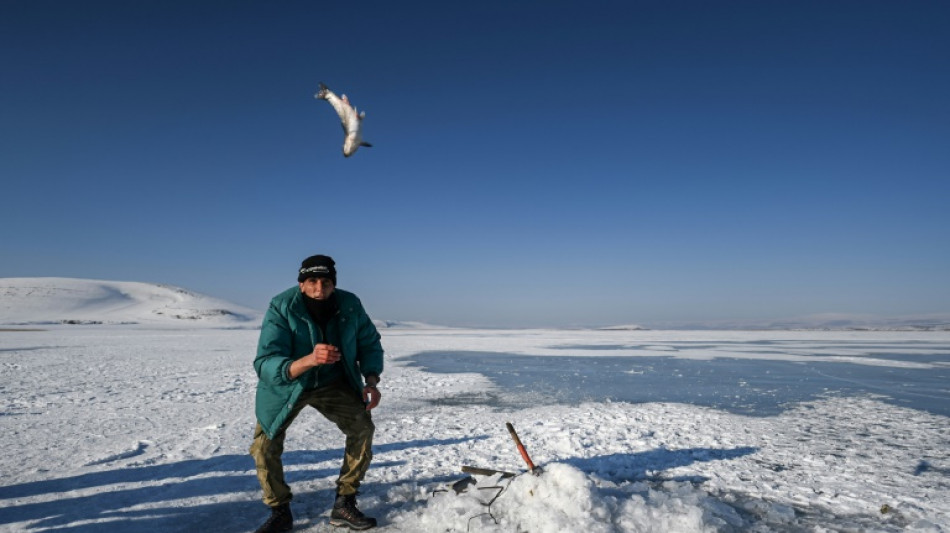

One-horse open sleigh ride across frozen Turkish lake
By the time Kismet the horse sets off, Orhan Goller's bare fingers have already turned blue from the freezing temperatures. But the pure white surroundings and the echo of hooves are enough to delight his customers in eastern Turkey.
Between December and March when the ice is sufficiently thick on Cildir Lake, one of the biggest in the Anatolia region, the 19-year-old who lives close by introduces tourists to the area which borders Georgia.
"We have 25 centimetres (9.8 inches) today," he says. "But the thickness can reach 40 centimetres. Some days the temperature falls to -30, -40 Celsius (-22, -40 Fahrenheit). It's not always sunny like today... But there you go, it's our livelihood."
The lake, which is 20 kilometres (12 miles) long, is a paradise in the summer for migrating birds, especially gulls, swans and wild geese.
The region mainly produces cheese, including "gravyer" which is a form of gruyere, made in the eastern province of Kars, with holes like the European original.
The cheese is a legacy of a visit by a Swiss citizen invited by the tsar when the Russians occupied the regional capital 70 kilometres from the lake in the 1870s.
But at nearly 2,000 metres altitude (6,500 feet), the winter is long and harsh and activity is rare so taking tourists on board horse-drawn sleighs is a small supplement to locals' income in a country where inflation reached nearly 50 percent in January.
Since the arrival of affluent visitors from Ankara by the Eastern Express, a tourist train which travels across Anatolia in 36 hours from the capital, revenue has risen.
- 'Mode of transport' -
Goller, an agronomy student in Kars, has grown up by the shores of Cildir Lake and is happy to be a guide at weekends.
"We bring our culture, our traditions to life. In normal times, these sleighs are our mode of transport. In the past, our grandparents used them to go to hospital, to travel across the region's villages," Goller says.
"Nowadays, people are curious and so we take them."
Attractions include Caucasian horses racing across the ice, javelin throwing, fishing under the ice -- which "we show to visitors to explain how we live here" Goller says as he lifts a fishing line from a hole made in the ice on the lake's surface.
Three visitor access points have been created along the shore where restaurants and tea houses have sprung up along with hot wine kiosks to warm those on excursions to the lake.
O.Aceves--ESF




